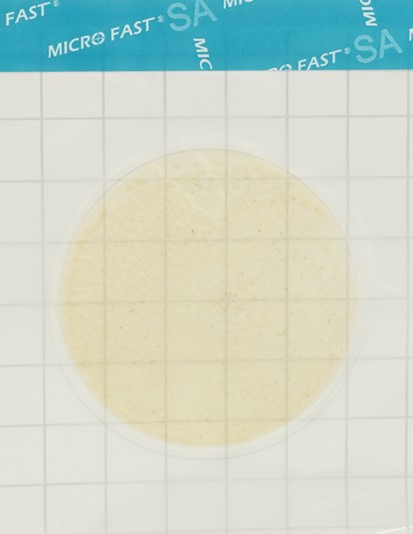How to make an earthworm chicken buffet

Earthworms are excellent food for poultry. They are very tasty (for chickens), rich in protein, fats and minerals and two amino acids - methionine and lysine, which are more important for poultry HEALTH than fishmeal.
If you are just starting to breed chickens, take advantage of the experience of experienced poultry farmers. They have a large barrel on the property, which is half-filled with compost from leaves and vegetable leftovers from the kitchen, and then populated with earthworms.
This is an easy way to diversify the chicken diet, getting top dressing almost for free.
The two varieties of earthworm that are easiest to grow are:
Lumbricus rubellus, the common red worm you see in the top 2 inches of garden soil and compost; Eisenia foetida, striped "tiger worms" used in vermicomposting systems.it seems that there is no such food that chickens love like earthworms. Your pets will eat them as much as they find. This is especially useful when growing young animals: the amino acid composition of earthworms is well suited to the amino acid needs of the body of chickens.
Ideally, for complete happiness, an adult chicken, if it ate only worms, would need 50 pieces. But since you are feeding the bird a balanced diet, 10 worms a day is sufficient.
The advantage of the "chicken worm buffet" is that in the compost bin, its inhabitants are available on demand, while in the garden and kitchen garden, worms approach the surface of the earth at night, and chickens roam during the day.
In winter, “free” worms completely hibernate, go to the depths, because the soil at the surface is too cold. But in a working composter it is always warm for them, and you have a supply of top dressing at hand at any time of the year.
So, all you need is a compost bin, worms, leftover food, and bedding. Bedding can be shredded newspaper, composted manure, leaf litter (except oak or pine needles), or any other organic compostable material.
To save money, you can set up a worm trap by laying logs and covering them with a pile of fallen leaves and compost. Then, on a damp and warm night, you need to go hunting with a flashlight, and you will definitely recruit the required number of inhabitants for a compost bin.
Drainage holes should be made at the bottom of the box, and in dry weather, spray the substrate with water to maintain a humid environment. But although worms love moisture, they easily drown when there is too much of it. Therefore, in rainy weather it is time to close the barrels.
By the way, not all chickens immediately eat earthworms, and the reason is quite simple. Hatchery-raised birds and young from commercial farms do not have the opportunity to understand that this top dressing is tasty and whether it is possible to eat worms in principle. So, if your pets have only been fed pellets, it will take time for them to get used to the new food.
Remember, eating earthworms can cause worms and intestinal parasites in chickens, so use preventive treatments.
Read together with it:
- Progress Agro presented two cloned calves in the Krasnodar region.According to Sergey Yakovenko, HEAD of the Altragene laboratory, large fetuses are a common problem in cloning, and researchers are continuing to work to reduce this risk. Previously, culture media containing bovine serum containing growth factors could contribute to increased calf weight. Now, a synthetic medium is being used, which has shown positive results. All newbornsThe calves were manually...
- "Истинный полешук" Русый рассказал, как нарушил стиль работы на совещании у ПрезидентаМихаил Русый 18 ноября, Минск. Александр Лукашенко 18 ноября собрал совещание по темам развития районов Припятского Полесья и реализации соответствующей программы. Основным докладчиком на мероприятии выступил Михаил Русый - "истинный полешук", как назвал его Президент, уполномоченный представитель главы государства в Брестской области и председатель Постоянной комиссии по законодательству и госуда...
- Основатель Wolt Мики Кууси: «Платите сотрудникам больше, чем они ожидают»К 35 годам Мики Кууси дважды попал в список FORBES, создал приложение доставки Wolt, которое продал за $8 млрд, превратил локальную конференцию Slush в один из крупнейших технологических форумов Европы. Вот каких принципов он придерживается «В жизни есть много вещей, которые нам просто приходится делать, например есть. И время — единственная валюта, которую мы не можем вернуть… Это не вопрос лени,...
- Сельхозорганизации Саратовской области наращивают объемы производства продукции животноводстваВ текущем году в сельскохозяйственных организациях региона наблюдается положительная динамика в производстве продукции животноводства. Об этом сообщил заместитель министра сельского хозяйства области по развитию отрасли животноводства Алексей Молчанов в ходе заседания комитета по аграрным вопросам, земельным отношениям, экологии и природопользованию регионального парламента. Так, производство яиц ...
- Ученые занимаются повышением продуктивности отечественного мясного кросса «Смена 9»Кросс демонстрирует на 2–3% лучшие показатели выживаемости по сравнению с зарубежными аналогами. Хотя у него пока ниже конверсия корма на 0,15% и яйценоскость, работа над этими вопросами активно продолжается. В настоящее время данный кросс составляет 4% в структуре мяса птицеводства в России, но планируется увеличить его долю до 1......
- "A grain surplus, 85,000 tons more vegetables." Shuleiko on the results of the agricultural year.November 16, MINSK . Belarus has been experiencing a grain surplus for two years now. Deputy Prime Minister Yuri Shuleiko stated this on television, according to BELTA. "Objectively, this year we saw not only a hot but also a rainy summer and spring frosts. This has contributed to our domestic agricultural season. It's been a prosperous year. I'd say there will be approximately 1......
- The Russian Ministry of Agriculture proposes extending veterinary regulations until 2032.The extension includes regulations for the prevention and eradication of diseases such as bradsot (Clostridium septicum), trichinosis (Trichinella), blackleg (Clostridium chauvoei), and porcine reproductive and respiratory syndrome (PRRS). The proposed changes stipulate the following new deadlines: for bradsot and trichinosis - from March 1, 2......





























































